
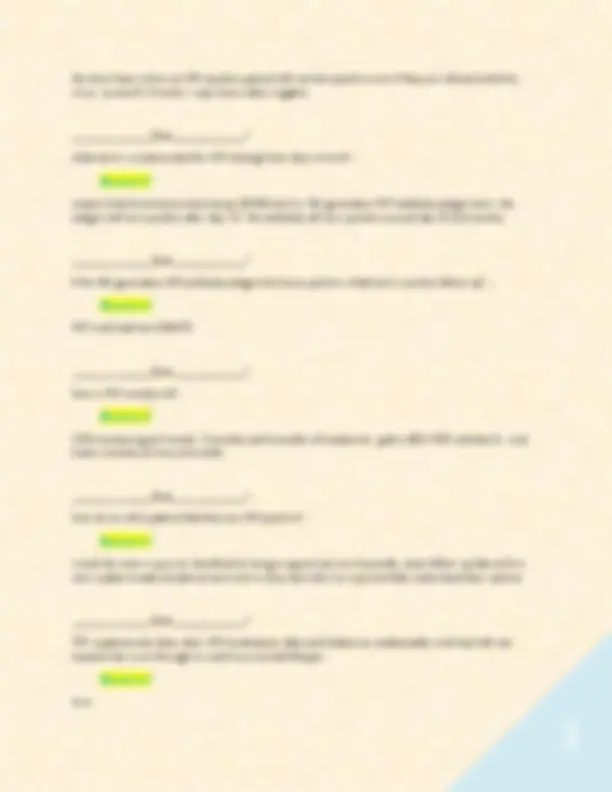
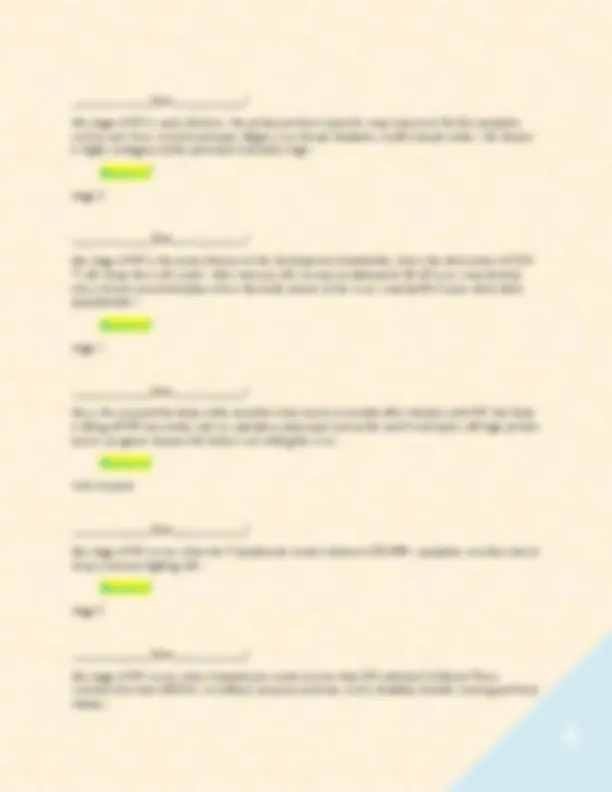
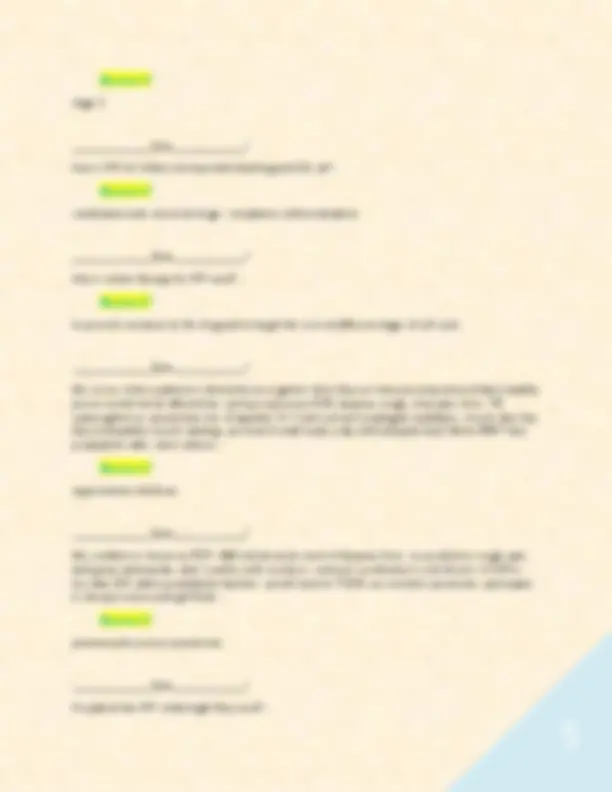

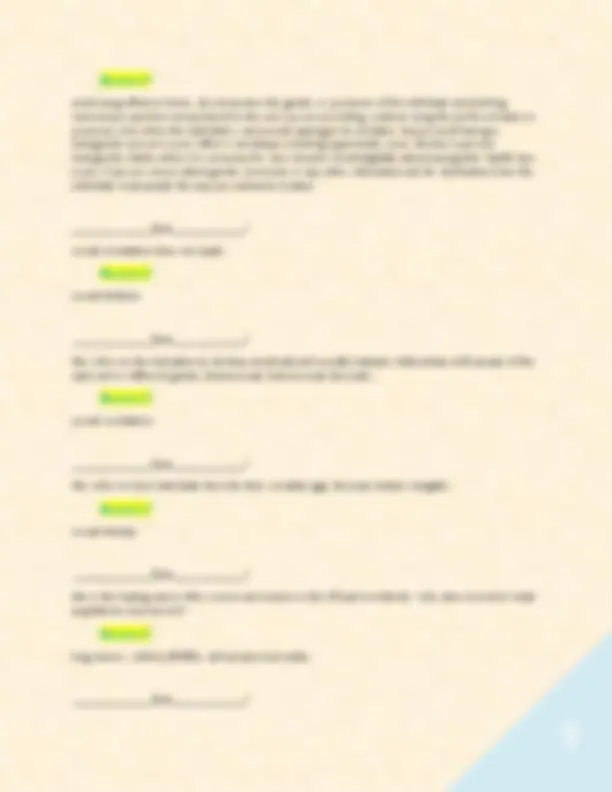
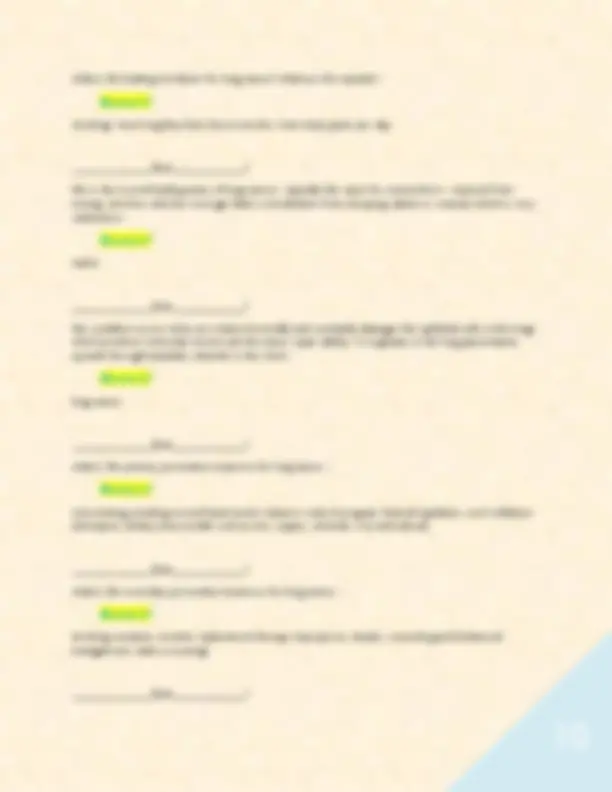
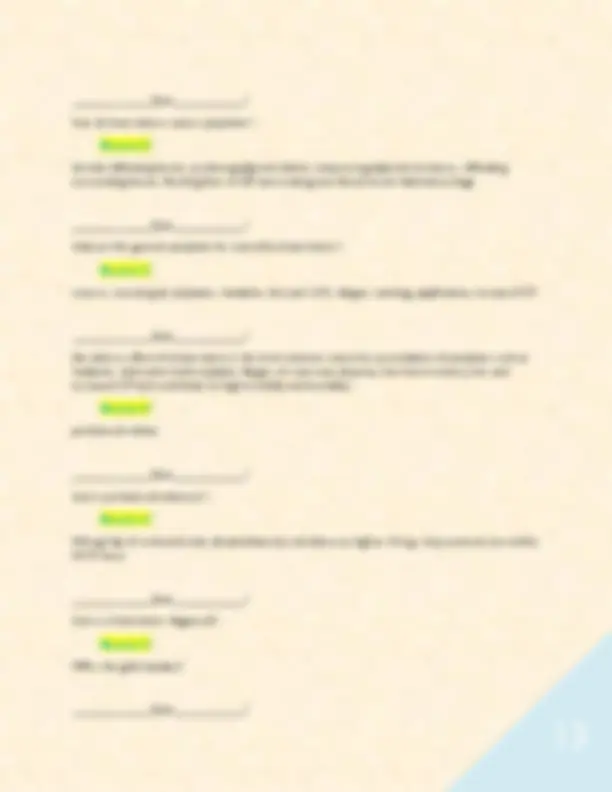

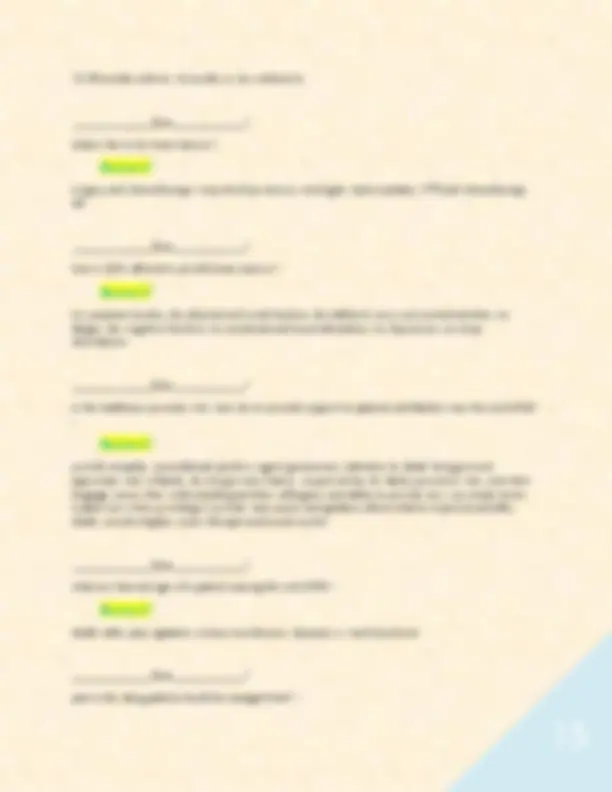
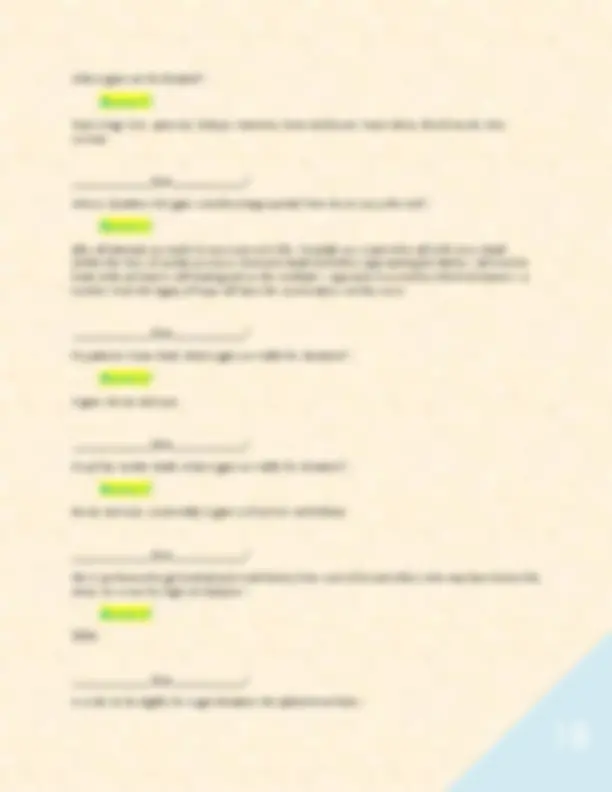

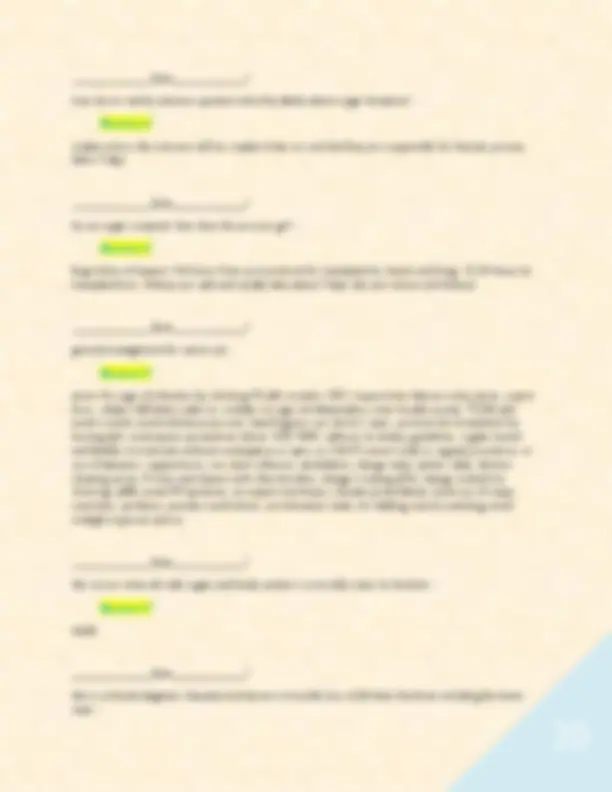

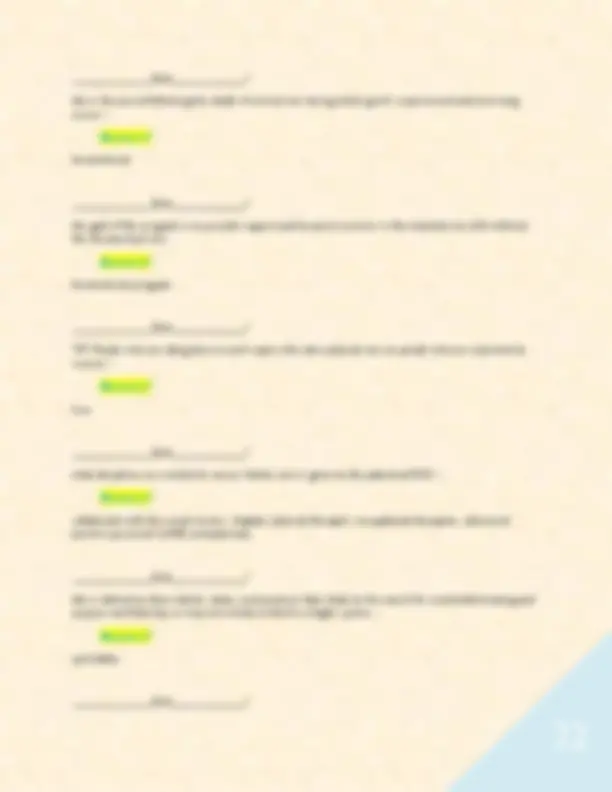

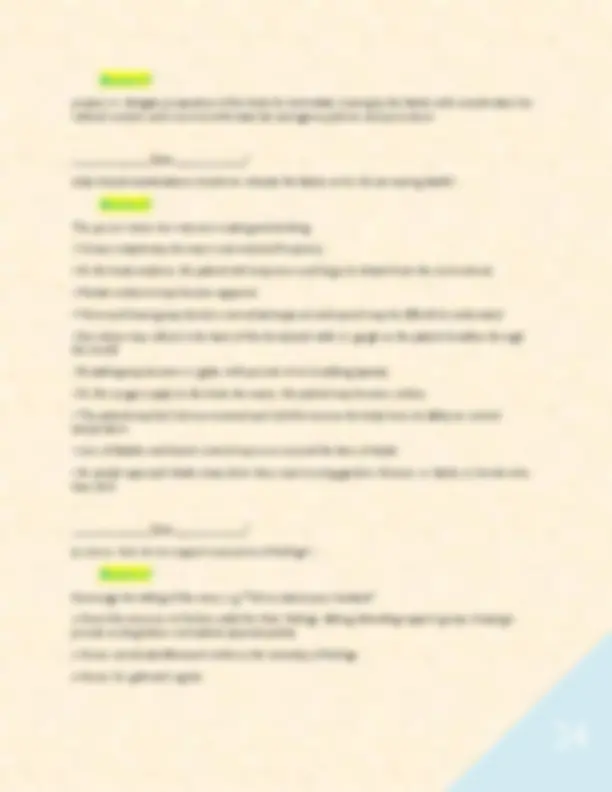


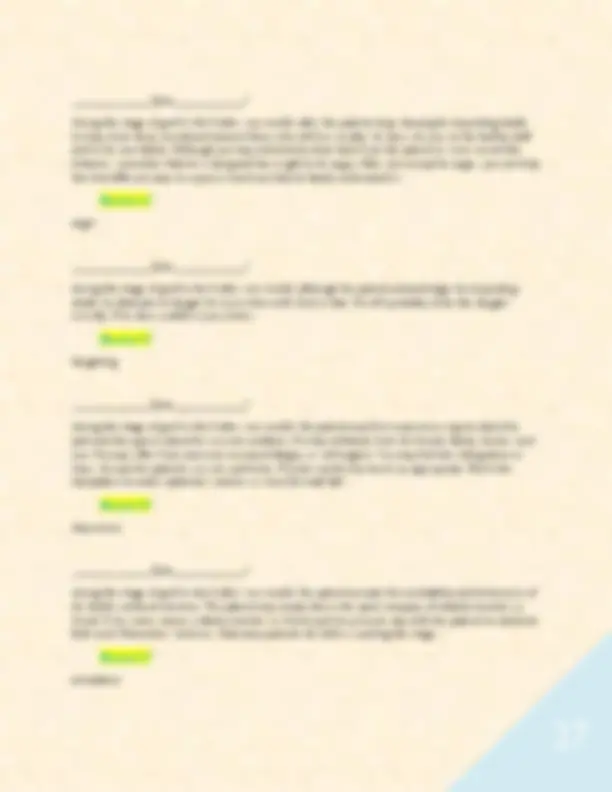
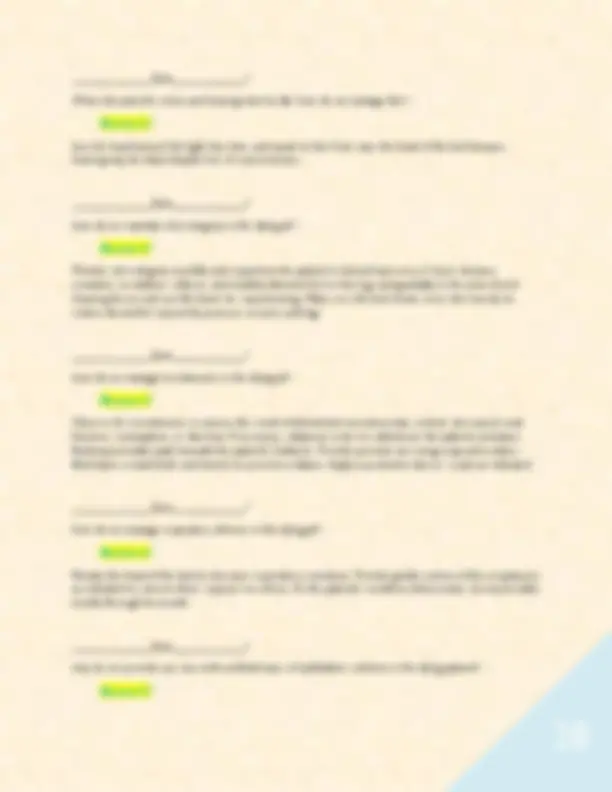



Study with the several resources on Docsity

Earn points by helping other students or get them with a premium plan


Prepare for your exams
Study with the several resources on Docsity

Earn points to download
Earn points by helping other students or get them with a premium plan
Community
Ask the community for help and clear up your study doubts
Discover the best universities in your country according to Docsity users
Free resources
Download our free guides on studying techniques, anxiety management strategies, and thesis advice from Docsity tutors
FINAL EXAM NUR 426 / NUR 426 (LATEST 2025/2026) Comprehension Practice Questions / Study Guide Newest Actual Questions & Answers (A+ Guide Solution) Terms in this set (138) _____________Quiz____________? this conditions is called retroviruses because they replicate in a backward manner going from RNA to DNA-- targets the CD4+ T cell and binds through cell fusion using reverse transcriptase enzyme-- causes major signs and symptoms and includes multiple infections despite aggressive treatment, failure to thrive or poor growth - Answer✓✓ HIV _____________Quiz____________? these cells are helper cells the normally recognizes antigens and signal body to develop an immune attack - Answer✓✓ CD4+ t lymphocyte _____________Quiz____________? what is the life cycle of HIV? - Answer✓✓ virus fuses with CD4 cell receptor, HIV inserts its RNA into cell using reverse transcriptase, the CD4 cell synthesizes HIV virus and the viruses are assembled and r
Typology: Exams
1 / 29

This page cannot be seen from the preview
Don't miss anything!






















Terms in this set (138) _____________Quiz____________? this conditions is called retroviruses because they replicate in a backward manner going from RNA to DNA-- targets the CD4+ T cell and binds through cell fusion using reverse transcriptase enzyme-- causes major signs and symptoms and includes multiple infections despite aggressive treatment, failure to thrive or poor growth -
_____________Quiz____________? these cells are helper cells the normally recognizes antigens and signal body to develop an immune attack -
CD4+ t lymphocyte _____________Quiz____________? what is the life cycle of HIV? -
virus fuses with CD4 cell receptor, HIV inserts its RNA into cell using reverse transcriptase, the CD cell synthesizes HIV virus and the viruses are assembled and released
_____________Quiz____________? how is HIV transmitted? -
through contact with certain body fluids such as blood, semen, rectal and vaginal secretions and breast milk and amniotic fluid _____________Quiz____________? how is HIV not transmitted? -
tears, saliva, urine, emesis, sputum, feces, sweat, bugs/ mosquitos, respiratory droplets or enteric routes such as eating after someone or drinking after someone _____________Quiz____________? what population is at most risk for HIV? -
black male to male sexual contact _____________Quiz____________? why is anal sex more risky than male to female vaginal intercourse? -
the rectum has a single layer of epithelial cells versus vagina and mouth having multiple layers _____________Quiz____________? T/F: the patient must know you are testing them for HIV -
true _____________Quiz____________? what is the window period for HIV? -
_____________Quiz____________? this stage of HIV is early infection-- the pt has just been exposed-- may experience flu like symptoms such as rash, fever, muscle/ joint pain, fatigue, sore throat, headache, swollen lymph nodes-- the disease is highly contagious at this point and viral load is high -
stage 0 _____________Quiz____________? this stage of HIV is the acute infection to the development of antibodies where the destruction of CD T cells drops the t cell count-- other immune cells increase to attempt to kill off virus-- may develop into a chronic persistent phase where the body cannot rid the virus-- may last 8-10 years and is fairly asymptomatic -
stage 1 _____________Quiz____________? this is the set point the body settles at within a few weeks to months after infection with HIV. the body is killing off HIV at a similar rate to replication--physicians look at this and if viral load is still high, pt have poorer prognosis because the body is not ridding the virus -
viral set point _____________Quiz____________? this stage of HIV occurs when the T lymphocyte count is between 200- 499 -- symptoms resurface due to drop in immune fighting cells -
stage 2 _____________Quiz____________? this stage of HIV occurs when t lymphocyte counts are less than 200 cells/mm3 of blood. Pt are considered to have AIDS for surveillance purposes and may receive disability, benefits, housing and food stamps -
stage 3 _____________Quiz____________? how is HIV tx? what is an important teaching point for pt? -
combination anti retroviral drugs-- compliance with medications _____________Quiz____________? why is combo therapy for HIV used? -
to prevent resistance to the drug and to target the virus at different stages of cell cycle _____________Quiz____________? this occurs when a patient is infected by an organism when they are immunocompromised that a healthy person would not be affected by-- pt may experience SOB, dyspnea, cough, chest pain, fever, TB, cytomegalovirus, pneumonia, loss of appetite, N, V and oral and esophageal candidiasis, chronic diarrhea, hairy leukoplakia, muscle wasting-- pt needs 6 small meals a day with adequate fluid, follow BRAT diet, prophylactic atbx, stool cultures -
opportunistic infections _____________Quiz____________? this condition is known as PCP-- S&S include acute onset of dyspnea, fever, no productive cough, pain, tachypnea, tachycardia, rales/ crackles with exertion-- common co-infection is oral thrush-- if CD4 is less than 200, admin prophylactic bactrim-- pt will need to TCDB, use incentive spirometer, participate in vibropercussion and get fluids -
pneumocystis jiroveci pnuemonia _____________Quiz____________? if a patient has HIV, what might they need? -
_____________Quiz____________? this medication reaches maximum protection from HIV for receptive anal sex at about 7 days of daily use-- indicated for HIV negative-- for receptive vaginal sex and iv drug user, maximum protection at about 20 days of daily use-- still need barrier precautions to prevent STD's -
truvada PrEP _____________Quiz____________? for HIV patients, what precautions are they one? -
standard precautions-- use gloves when bodily fluids, blood, secretions, excretions and contaminated items for touching mucous membranes and non intact skin-- use a gown during procedures and activities when contact with clothing/ exposed skin with blood or body fluids, secretions and excretions is anticipated-- use a mask during splashes or sprays of blood, body fluids and secretions especially suctioning or endotracheal intubation _____________Quiz____________? what happens if a health care provider experiences a needle stick from an HIV positive patient? -
alert supervisor, determine HIV status of exposure source, use rapid testing, counseling for contraceptive precautions such as barrier contraceptives, avoid blood/tissue donation, avoid pregnancy and breastfeeding during 6-12 weeks post exposure, 3 drug PEP may be prescribed, reevaluation of exposed provider within 72 hours, HIV testing at baseline, 6 weeks and 4 months after exposure, CBC, renal and hepatic function tests at 2 weeks after exposure _____________Quiz____________? this term is defined as a person whose sexual orientation does not fall into the LGBT categories -
queer _____________Quiz____________? this is determined by a physician at birth based on presenting genitalia, chromosomes and physiology -
sex _____________Quiz____________? this is the idea of the sense of self as a man or a woman -
gender identity _____________Quiz____________? this is the idea of masculine and feminine aspects of self, how we perform, dress etc -
gender role and expression _____________Quiz____________? this is the directionality of our sexual desires -
sexual orientation _____________Quiz____________? what is the LGTBQ population at risk for? -
mental health such as depression and anxiety, employment, suicide _____________Quiz____________? what are the criteria for gender dysphoria? -
a marked incongruence between ones assigned sex and ones expressed gender and clinically significant distress or impairment social, occupational or other important areas of functioning _____________Quiz____________? 10 best practices for working with transgender individuals -
what is the leading risk factor for lung cancer? what are the variants? -
smoking-- how long they have been a smoker, how many packs per day _____________Quiz____________? this is the second leading cause of lung cancer-- typically the cause for nonsmokers-- exposed from mining, colorless odorless inert gas that is a breakdown from decaying radium or uranium which is very radioactive -
radon _____________Quiz____________? this condition occurs when an irritant chronically and constantly damages the epithelial cells in the lungs which produces molecular lesions and decreases repair ability-- it originates in the lung parenchyma, spreads through lymphatic channels in the chest -
lung cancer _____________Quiz____________? what is the primary prevention measures for lung cancer -
not smoking, avoiding second hand smoke, tobacco control program, federal legislation, cox2 inhibitors and aspirin, dietary trace metals such as zinc, copper, selenium, iron and calcium _____________Quiz____________? what is the secondary prevention measures for lung cancer -
smoking cessation, nicotine replacement therapy, buproprion, chantix, counseling and behavioral management, radon screenings _____________Quiz____________?
if a patient presents with a cough, hemoptysis, dyspnea from hypoxemia, hoarseness, atelectasis or post obstructive pneumonia, what condition might they have? -
lung cancer _____________Quiz____________? if a patient has lung cancer that has metastasized, how might they present? -
fatigue, pain, headaches, seizures, anorexia and weight loss, phrenic nerve paralysis, elevated diaphragm, chest pain, upper extremity paresthesia, PE or SVC syndrome _____________Quiz____________? how is lung cancer diagnosed? who should be screened for lung cancer according to CDC? how often? -
xray, CT, PET scans, bronchoscopy, sputum cytology-- hx of heavy smoking, smoke currently or within last 15 years and are between age of 55- 80 -- annually _____________Quiz____________? this stage of non small cell lung cancer is limited to the lungs and have not spread to the lymph nodes -
stage 1 _____________Quiz____________? this stage of non small cell lung cancer effects the lungs and nearby lymph nodes -
stage 2 _____________Quiz____________? this stage of non small cell lung cancer effects the lungs and has spread to lymph nodes in the middle of the chest-- if these are on the same side of the chest it is considered?-- if it spread to the opposite side or above the collar bone it is considered? -
_____________Quiz____________? how do brain tumors causes symptoms? -
directly infiltrating tissues, producing adjacent edema, compressing adjacent structures, infiltrating surrounding tissues, blocking flow of CSF and creating new blood vessels that hemorrhage _____________Quiz____________? what are the general symptoms for a pt with a brain tumor? -
seizures, neurological symptoms, headache, decrease LOC, fatigue, vomiting, papilledema, increased ICP _____________Quiz____________? this adverse effect of a brain tumor is the most common reason for presentation of symptoms such as headache, obstructive hydrocephalus, fatigue, n/v, anorexia, alopecia, short term memory loss and increased ICP and contributes to high morbidity and mortality -
peritumoral edema _____________Quiz____________? how is peritumoral edema tx? -
4 - 8 mg/ day of corticosteroids (dexamethasone) sometimes as high as 16 mg-- improvement seen within 24 - 72 hours _____________Quiz____________? how is a brain tumor diagnosed? -
MRI is the gold standard _____________Quiz____________?
where do gliomas originate from? meningiomas? neuromas? germinomas? adenomas? -
glial cells such as astrocytes, ependymal cells and oligodendrocytes-- meningeal-- schwann cells-- germ cells-- pituitary gland _____________Quiz____________? this grade of brain tumor is relatively circumscribed, non-infiltrating and low proliferative potential -
grade 1 _____________Quiz____________? this grade of brain tumor has atypical cells that are well differentiated, infiltrating and have low proliferative potential -
grade 2 _____________Quiz____________? this grade of brain tumor is diffusely infiltrating, nuclear atypia, significant proliferative activity -
grade 3-- anaplastic _____________Quiz____________? this grade of brain tumor is poorly differentiated-- presence of necrosis and or microvascular proliferation -
grade 4-- glioblastoma _____________Quiz____________? what is the survival rate of a brain tumor in general? -
always treat!!!! provide frequent assessment, may not be able to rate so rely on behavior cues such as guarding, grimacing and inc HR, rule out other causes of distress and use oral/ transdermal medications _____________Quiz____________? if a pt nearing the end of life is experiencing dyspnea, what should the nurse do? -
be proactive, provide oxygen, positioning, maintain cool environment. calm environment, use of opiods and benzos _____________Quiz____________? this presents as the noisy respirations as death is approaching, what should the nurse do? -
death rattle-- determine if it can be tx based on underlying cause such as PE, MI, fluid overload, or pnuemonia-- suctioning not recommended--anticholinergics are often used if underlying cause tx is not effective-- scopolamine patch and reduce or stop fluids and enteral feeds-- provide reassurance and education-- reposition pt, HOB elevated-- do not call it death rattle... _____________Quiz____________? if a pt approaching death is experiencing restlessness, what can the nurse do? -
assess for reversible cause such as constipation or distended bladder-- provide calm comforting environment and use meds as ordered _____________Quiz____________? if a pt is experiencing delirium hyperactively how might they present? hypoactively? what can we do? -
restlessness, calling out, agitated, disoriented, crawling out of bed, delusions-- lethargic, somnolent, appear to be in stupor-- environmental changes such as reorientation, calm environment, always introduce yourself-- use benzos but may worsen in elderly-- tx with haldol, assess bowel and bladder function, help reset sleep/wake cycle _____________Quiz____________?
what are imminent signs of death in CV system? respiratory? metabolic? GI? urinary? communication? -
cold extremities, mottling, change in VS-- change in breathing pattern to apnea, cheyne stokes, audible secretion known as death rattle-- fatigue, surge of energy, temp changes, diaphoresis-- dec intake, n, v, diarrhea, c, incontinence-- dec UOP-- withdrawn mood _____________Quiz____________? what are the S&S that death has occured? -
absent pulse, BP, RR, response to stimuli, bowel/ bladder incontinences, eyes slightly open, relaxed jaw, mouth open, waxy pasty appearance of skin _____________Quiz____________? what are some cultural considerations when death is imminent? -
death rites and rituals, encourage time with the body, ask who needs to view the body, interpret or normalize post mortem changes, provide emotional support _____________Quiz____________? what are some considerations for post mortem care? -
handle body with respect, ask family if they want to participate, prepare family for removal of the body, assess family and caregiver needs, bereavement and emotional support, count opiods and destroy unused ones, have a witness _____________Quiz____________? what is alabama's organ and tissue donation alliance? -
legacy of hope _____________Quiz____________?
basic labs, organ specific labs, serology (hepatitis, HIV etc), blood type, cultures and consults performed _____________Quiz____________? how are organs matched? how long do they have to decide? -
blood type, body size, wait time and medical status-- 1 hour _____________Quiz____________? how are organs transported? -
in preservation solution _____________Quiz____________? this occurs when their is twitching all over as a result of opiods specifically morphine-- needs to be tx with benzodiazepines-- opiods should be rotated -
myoclonus _____________Quiz____________? what organ is in most demand? -
kidney _____________Quiz____________? how is brain death confirmed? causes? -
by 2 physicians not associated with organ donation, thorough neuro assessment by provider followed up by the nurse-- falls, gunshots, overdoses, brain tumors
_____________Quiz____________? how do we satisfy common question asked by family about organ donation? -
explain where the incisions will be, explain it has no cost but they are responsible for funeral, process takes 3 days _____________Quiz____________? for an organ recipient, how does the process go? -
large bolus of heparin, 4-6 hours from procurement for transplant for hearts and lungs, 12-24 hours to transplant liver, kidneys are split and usually take about 3 days (do not remove old kidney) _____________Quiz____________? general management for cancer pt -
assess for signs of infection by checking VS q4h, monitor CBC, inspect sites that are entry ports, report fever, obtain C&S before atbx tx, exhibits no signs of inflammation, clear breath sounds, TCDB q2h, avoid crowds, avoid infectious persons, hand hygiene, use electric razor, prevent skin breakdown by turning q2h, neutropenic precautions below 1000 WBC, adheres to dietary guidelines, regular bowel and bladder movements without constipation or pain, no CAUTI, avoid rectal or vaginal procedures or use of tampons, suppositories, use stool softeners, ambulation, change water pitcher daily, denture cleaning, assess IV sites and cleanse with chlorhexidine, change iv tubing q72h, change central line dressings q48h, avoid IM injections, use aspetic technique, educate pt and family, avoid use of soaps, cosmetics, perfumes, powders and lotions, use lukewarm water for bathing, avoid scratching, avoid sunlight exposure and co _____________Quiz____________? this occurs when all vital organs and body systems irreversibly cease to function -
death _____________Quiz____________? this is a clinical diagnosis characterized by an irreversible loss of all brain functions including the brain stem -